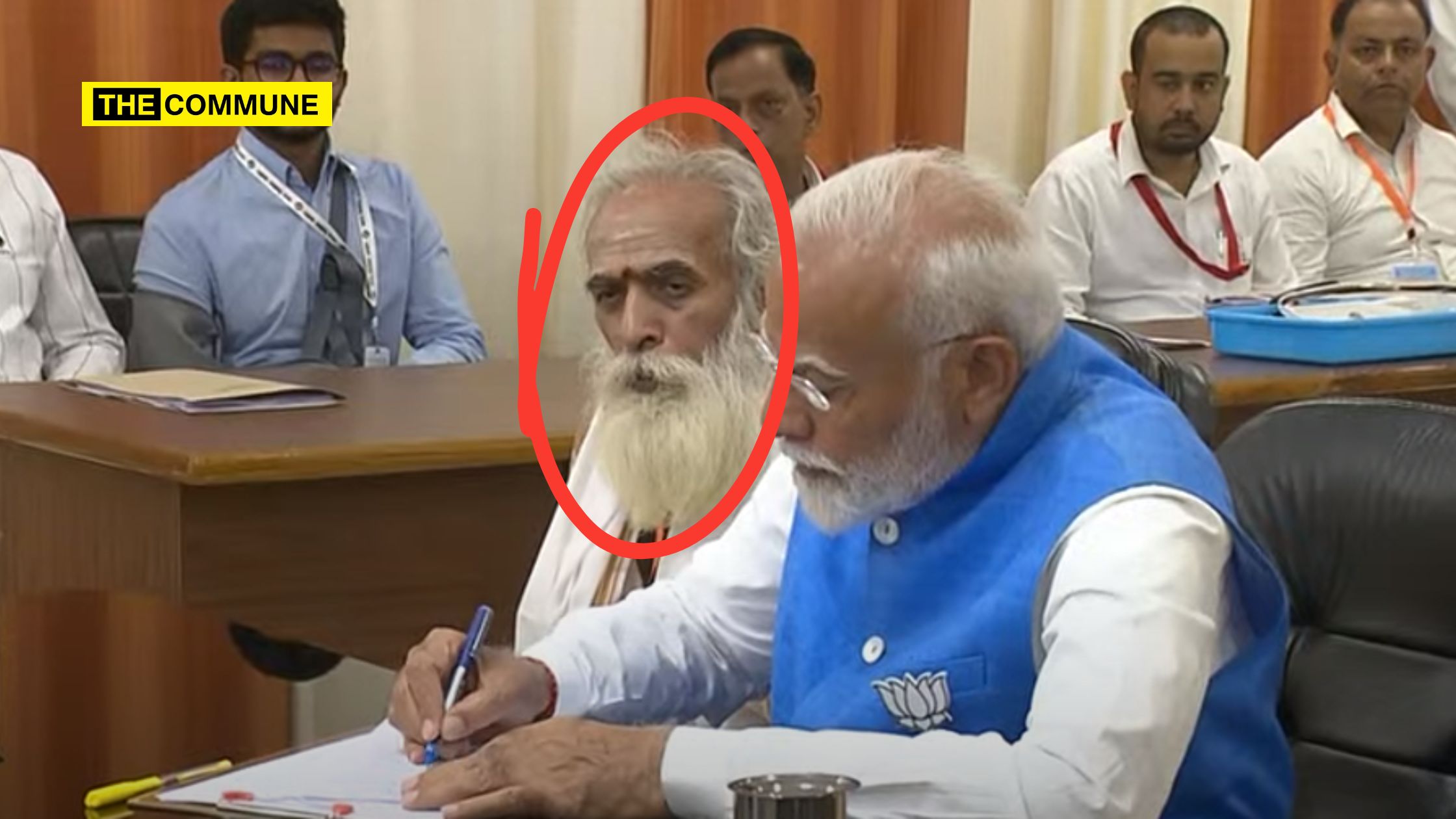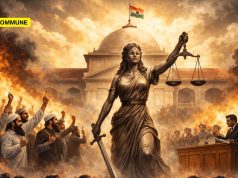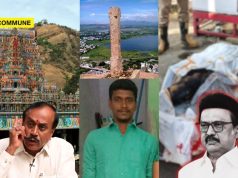
Prime Minister Narendra Modi submitted his nomination papers for the Lok Sabha elections in Varanasi on Tuesday (14 May 2024). He was accompanied by Alongside him, several Union ministers like Rajnath Singh and Amit Shah, along with 12 chief ministers from different states and leaders of NDA allies.
Visuals show PM Modi seated alongside an old man looking like a priest with Uttar Pradesh Chief Minister Yogi Adityanath and another man accompanying.
#WATCH | Prime Minister Narendra Modi files nomination from Varanasi Lok Sabha seat for #LokSabhaElections2024
Uttar Pradesh CM Yogi Adityanath is also present on the occasion. pic.twitter.com/woWNPgqdiG
— ANI (@ANI) May 14, 2024
Who Is The Bearded Priest?
Ganeshwar Shastri Dravid, a revered scholar of Kashi, is renowned for his unparalleled expertise in astrology and Vedic knowledge. His mastery extends to the intricate realms of planetary movements, constellations, auspicious timings (choghadis), and rituals, surpassing that of any other scholar in the country. Despite being originally from Tamil Nadu, he has made Meerghat area of Kashi his home, residing at the Sangveda Vidyalaya in the ancient city.
Family Background
Ganeshwar Shastri is the second son of Rajeshwar Shastri, who was also a scholar of Vedas and Shastras. He lives along with his brother, Pandit Vishweshwar Shastri, who is also an equally esteemed scholar. The brothers are consulted for inputs on special rituals, research and significant muhurthams.
Ganehswar has traveled extensively across India to spread religious teachings. When in Kashi, he teaches and primarily implements decisions provided by the Girvanavagvardhini Sabha at the Sangveda Vidyalaya. Additionally, he generously offers guidance on astrology, Ayurveda, and rituals to address people’s concerns.
Ganeshwar operates his own Shastrarthshala, established by his great grandfather who had migrated from Tamil Nadu. Legend has it that when his grandfather arrived in Kashi, local Pandits rigorously examined him before granting him residence. The institution also taught children to become Acharyas and perform rituals.
His Tamil Connection
According to reports, Ganeshwar’s ancestry can be traced to Thiruvisanallur, a small village near Kumbakonam in Thanjavur District of Tamil Nadu. Their great grandfather, Ram Subramanya Ganapathi, hailed from Thiruvisanallur and was also a Vedic scholar by who went by the name Ramachandra Shastri. His father was Venkatahara Sheshadri too was a Vedic scholar. Two centuries ago, the southern part of India boasted two eminent scholars of Krishna Yajurveda: Ram Subramanya Ganapathi and Muthu Ganapathi. Their legacy continues to influence scholars of Krishna Yajurveda in southern part of India even today.
Ram Subramanya Ganapathi, also known as Shesha Jata Vallabh, embarked on a pilgrimage, journeying on foot from his village to Prayag, then to Rameshwaram, and finally arriving at Kashi, carrying Ganga water and sand from Ram Setu.
Upon reaching Kashi, he faced a grueling test lasting 36 days from the scholars of the city, displaying impeccable recitation of mantras and affirming his scholarly prowess. He resided near the Manikarnika Ghat, sustaining himself on alms and conducting continuous recitation of Krishna Yajurveda and Vishnu Sahasranamam. In the evening, he would receive leftover vegetables from the vegetable vendors at Dashaswamedh Ghat, which he would cook and consume at night.
He has had four sons, all of them scholars. The eldest, Sitaram Shastri, has been a great scholar of Nyaya. The second son, named Laxman Shastri, has been a scholar of Nyaya, Vedanta, and Shukla Yajurveda. The third son, Narayan Shastri, has been a scholar of Puranas, among other subjects. The fourth son, Venkatesh Shastri, has been a scholar of English and History. Ram Subramanya Ganapathi has taught Vedas to his second son Laxman Shastri until the age of 14. He has studied Nyaya Shastra under the guidance of Kailash Chandra Shiromani Mahashay. Ram Subramanya Shastri himself took sanyaas after arranging Laxman Shastri’s marriage to Annapurna, the daughter of Mahamahopadhyay Subramanya Shastri who had come from Mysore. Ram Subrahmanya Ganapathi then stayed in Uttarakhand for the next 20 years. Later he came back to Kashi and spent his last days.
Ganeshwar Shastri’s Role In The Revival Of Ancient Hindu Sites
Ganeshwar Shastri’s remarkable contributions include determining the auspicious timings for the consecration of Ramjanmabhoomi Temple in Ayodhya. Particularly, he was the one who identified the special muhurtham of 84 seconds for the consecration of Ram Lalla at Ayodhya.
For the Bhumi Pooja of Ram Mandir, he had allocated a precise 35 seconds as the auspicious time based on astronomical calculations. Other significant events like the consecration of the Kashi Vishwanath Dham and also its Bhumi Pujan were also marked by him.
While 13th December had been deemed auspicious for the inauguration in Kashi, many scholars had opposed it, citing concerns about the number 13. However, Ganeshwar Shastri had dispelled everyone’s doubts.
(With inputs from Live Hindusthan)
Subscribe to our channels on Telegram, WhatsApp, and Instagram and get the best stories of the day delivered to you personally.




